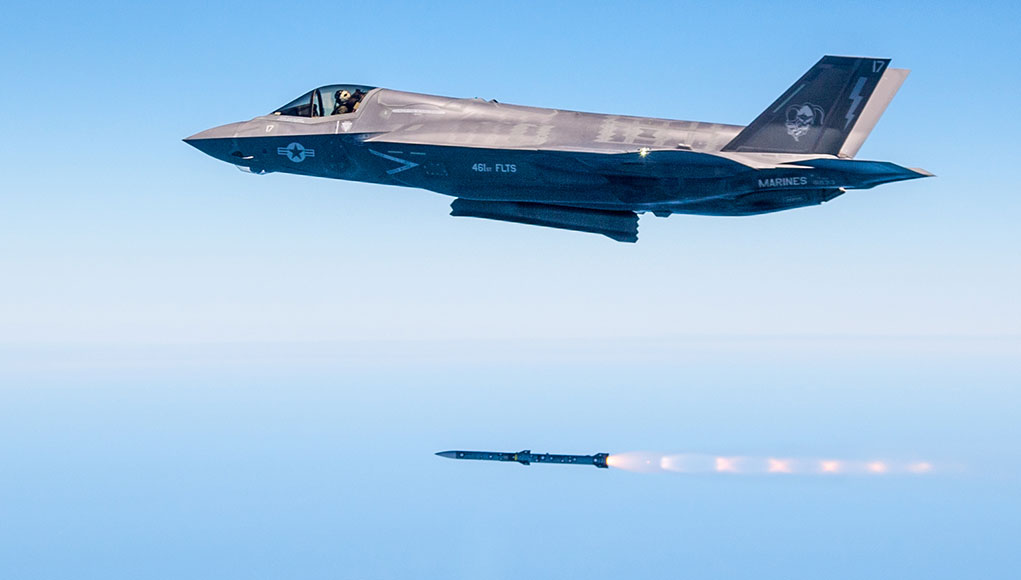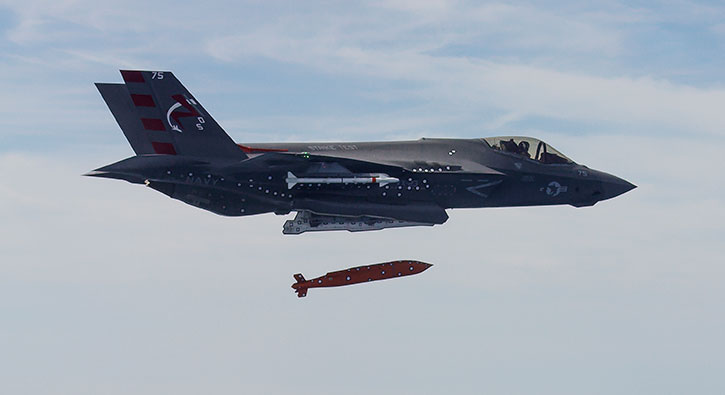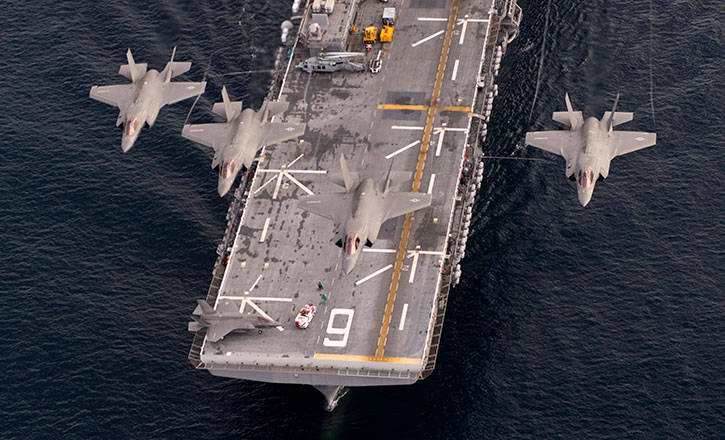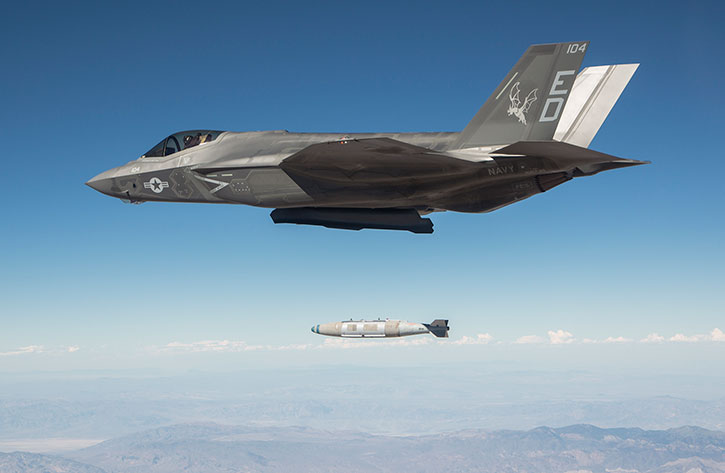Missing Links in the Kill Chain
The DTO&E 2016 report lists the F-35 lack of accuracy in weapons delivery as an issue of concern. Such accuracy is derived by the aircraft fire-control capabilities to support the “find, fix, track, target, engage, assess” kill chain.
Issues were reported with all the air/air weapons currently used by the F-35 – AIM-120 AMRAAM, AIM-9X Sidewinder and AIM-132 ASRAAM. The later, to be used by the British F-35B, required changes to the fire control software to correct problems, but those changes may have caused other issues with the integration of the AIM-9X, used by all the remaining operators of the aircraft. On six tests of the AMRAAM missiles three were declared ‘partially successful’ or ‘unsuccessful’, five of the six required control room intervention to launch the AMRAAM missile. Similar issues caused problems to the air/ground weapons – fixes designed to improve the use of Paveway IV for the Brits could cause issues with the GBU-31 laser guided bomb.
Other issues were related to sensor fusion, electronic warfare (EW) that continued to cause ambiguous threat displays, limiting the pilot ability to effectively respond to threats, to a level requiring offboard sources to provide accurate coordinates for precision attack. On some instances on board sensors could not accurately locate and identify ‘enemy’ radars and other electronic emitters.


A known limitation of the F-35 that results from its stealth advantage is the limited space in the internal weapons bay. However, apart from the limited number of weapons is the fact that the two guided munitions carried in this weapons bay cannot be launched from a distance; at present the F-35 in the Marine Corps Blocks 2b and US Air Force 3i are limited to carrying direct attack weapons (laser guided or GPS guided weapons). Lack of a stand-off weapon means the F-35 must get very close to its target to carry out the attack, thus risking detection. “Lack of a standoff weapon choice would force the F-35 Block 3i to fly much closer to engage ground targets and, depending on the threat level of enemy air defenses and acceptable mission risk, it may be limited to engaging ground targets that are defended by only short-range air defenses, or by none at all.” Gilmore warned.
One of the standoff weapons the U.S. Navy considered for the F-35C was the Joint Stand-Off Weapon (JSOW-C1). However, due to integration problems uncovered during testing recently it may not be ready for the planned initial operational deployment (IOC) next year.


Apart of the unique stealth capability, sensor fusion is hailed as a unique force multiplier for the F-35, providing its pilots the capability to dominate the battlespace and engage targets before the enemy can realize they are at risk. However, recent tests indicated that, although highly sophisticated and advantageous this fusion shield may not be as solid as planned. In some instances, rather than reducing pilot workload fusion sometime added clutter. Testers reported air tracks that split erroneously or a single target displaying multiple false tracks, when the different sensors do not add up, and cause erroneous fusion solution. As a workaround pilots are trained to turn off some of the sensors, to try and cancel multiple tracks. “This method is unacceptable for combat and violates the basic principle of fusing contributions from multiple sensors into an accurate track and clear display to gain situational awareness and to identify and engage enemy targets.” Gilmore commented in his report.
Managing electronic tracks from ground targets is particularly tricky. Sometime, multiple false tracks are displayed when only one threat emitter is operating. On the other hand, tracks that ‘time out’ and drop from the display cannot be recalled. Such absence can cause pilots to lose tactical battlefield awareness on enemy air defense radars that turn on only intermittently, as is typical of missile engagement radars.
The issues of fusion errors are not limited to a specific aircraft. Since F-35s share data over the Multifunction Advanced Data Link (MADL) network, fusion error issues exacerbate to entire formations as aircraft share erroneous tracks over the network.
Another highly praised capability is employing the APG-81 phased array radar and other electronic warfare on board to jam enemy emitters. However, testing has shown that the aircraft Electronic warfare (EW) capabilities, including electronic attack (EA), are inconsistent and, in some cases, not effective against required threats. Understandably the details of these deficiencies are classified, but they could limit the F-35 capacity to conduct Suppression/Destruction of Enemy Air Defenses (SEAD/DEAD) and other missions against fielded threats.
Although these issues are likely to be resolved in future software upgrades, problems could get worse if the F-35 is sent to combat now, where it could face new and unfamiliar threats. Theoretically, the U.S. Reprogramming Laboratory (USRL), responsible to produce the Mission Data Loads for the aircraft, will provide the updates for the fleet. However, recent inspections realized the lab is way behind in delivering the first operational MDL for the Block 3f. According to the current schedule Block 3f MDLs will not be optimized to ensure the F-35 will be capable of detecting, locating, and identifying modern fielded threats until 2020. Even worse, lacking the manpower and tools to assess new threats, when tasked with an urgent requirement to deliver updates the lab processed the updates in months, rather than days required for the task. A possible solution could come from some foreign users are turning to their own labs to develop MDL to suite their needs, but these would require further validation to be used with the US aircraft.
Continue to the next part : A Gunslinger with Bad Eyesight





















